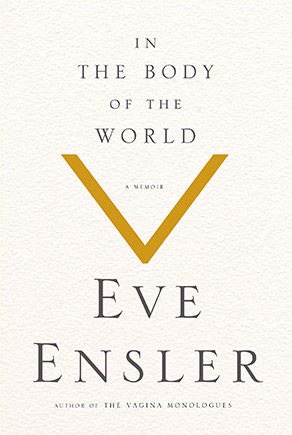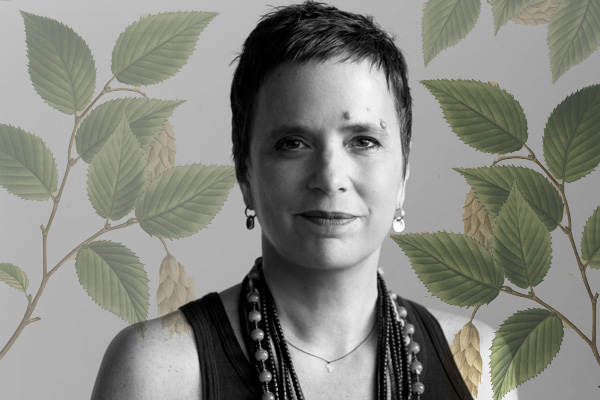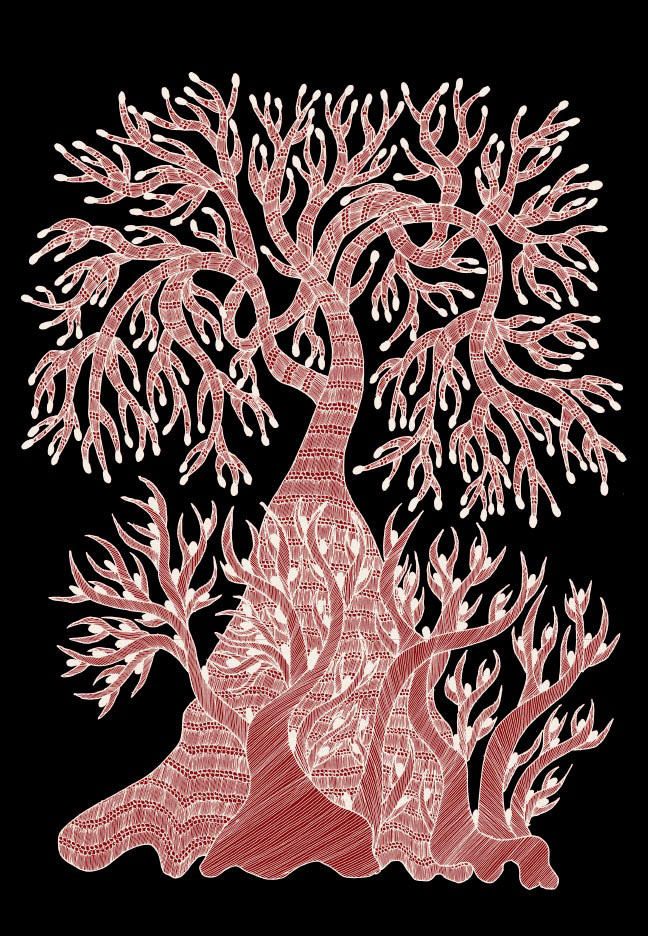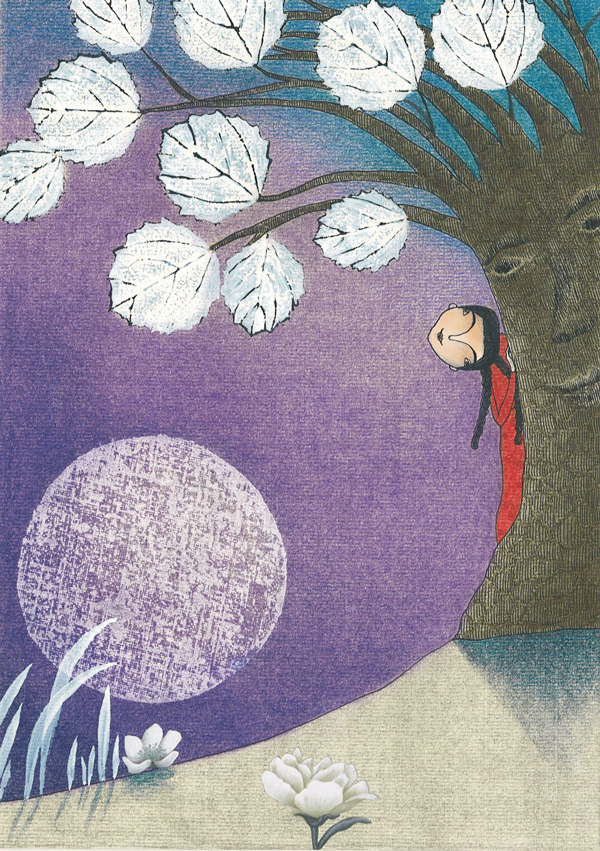The Unlikely Roads That Lead Us Back to Ourselves: Eve Ensler on How a Tree Saved Her Life
by Maria Popova
An emboldening story of reawakening to the “insane delight” of merely being.
 Tony Award-winning playwright, performer, and activist Eve Ensler is best-known for the paradigm-shifting 1998 cultural classic The Vagina Monologues and the monumental V-Day movement that sprang from it. She is also a woman of hard-earned wisdom on how traumatic experience makes us leave our bodies. Her harrowing and hope-giving book In the Body of the World: A Memoir of Cancer and Connection (public library) chronicles Ensler’s tumultuous journey and the paths — often confusing, usually surprising, never easy, yet always simple — that lead us back to our bodies and our whole selves.
Tony Award-winning playwright, performer, and activist Eve Ensler is best-known for the paradigm-shifting 1998 cultural classic The Vagina Monologues and the monumental V-Day movement that sprang from it. She is also a woman of hard-earned wisdom on how traumatic experience makes us leave our bodies. Her harrowing and hope-giving book In the Body of the World: A Memoir of Cancer and Connection (public library) chronicles Ensler’s tumultuous journey and the paths — often confusing, usually surprising, never easy, yet always simple — that lead us back to our bodies and our whole selves.
On this winding road back to herself, Ensler encountered a most unexpected sherpa: a tree — one of those strange and wonderful companions to our existence, which Hermann Hesse called “the most penetrating of preachers” and in which we have found the secret life of the spiritual world, the great mysteries of science, and the perfect visual metaphor for visualizing human knowledge. Trees are, after all, the oldest living unitary things in the world — and something about the patience with which they bear witness to the world makes them speak deeply to life and death.
One tree did precisely that for Ensler. She paints the backdrop of her lifelong resistance to the transformation to follow:
I have been afraid of trees. I have felt the Earth as my enemy. I did not live in the forests. I lived in the concrete city where I could not see the sky or sunset or stars. I moved at the pace of engines and it was faster than my own breath. I became a stranger to myself and to the rhythms of the Earth. I aggrandized my alien identity and wore black and felt superior. My body was a burden. I saw it as something that unfortunately had to be maintained. I had little patience for its needs.
She recounts the curious, almost mystical effect of a particular tree outside her hospital room as she lay fighting for life after a monstrous cancer had ravaged her body:
What I hadn’t anticipated was the tree. I was too weak to think or write or call or even watch a movie. All I could do was stare at the tree, which was the only thing in my view. At first it annoyed me and I thought I would go mad from boredom. But after the first days and many hours, I began to see the tree.On Tuesday I meditated on bark; on Friday, the green leaves shimmering in late afternoon light. For hours I lost myself, my body, my being dissolving into tree.
The tree became an antidote to all the habitual ways in which we escape from ourselves — from the gentle aliveness of the world, both inner and outer — and launch into a deadening trot on the hedonic treadmill, placing our fragile sense of worth on doing rather than being. Ensler writes:
I was raised in America. All value lies in the future, in the dream, in production. There is no present tense. There is no value in what is, only in what might be made or exploited from what already exists. Of course the same was true for me. I had no inherent value. Without work or effort, without making myself into something significant, without proving my worth, I had no right or reason to be here. Life itself was inconsequential unless it led to something. Unless the tree would be wood, would be house, would be table, what value was there to tree? So to actually lie in my hospital bed and see tree, enter the tree, to find the green life inherent in tree, this was the awakening. Each morning I opened my eyes. I could not wait to focus on tree. I would let the tree take me. Each day it was different, based on the light or wind or rain. The tree was a tonic and a cure, a guru and a teaching.
She traces the origin of her arboreal antagonism:
“I never want to see another tree,” I said with bravado at twenty-two as I was speeding down a turnpike away from the green hills of Vermont toward Manhattan. I think I said “fucking tree.” I never want to see another fucking tree. It was a joke, but it wasn’t a joke. I hated trees. They had come to mean small towns and small minds, isolation and gossip, long, freezing winters and endless, green, swallowing landscapes, skiing coeds and empty chatter, families and babies, marriage and life. Trees had everything to do with life. I drove that day out of the forests and hills and blue skies and nights of falling stars into concrete, after-hours joints, Mafia hit men, anonymous sex, anonymous despair, gin and bourbon, and an end to morning, let alone trees. I see now how much I wanted to die, or how much I did not want to live with the pain inside me.A group therapist once said that if you want to understand your relationship to your mother, look at your relationship to groups, but I say, “Look at your relationship to the Earth.” The Earth was terrifying to me and separate, radically apart, foreign. I wanted it so much, I stopped wanting it.This tree outside my room brought back other trees, trees I had seen without seeing, had loved without loving: the weeping willow at the bottom of my driveway in Scarsdale, madly shedding in the fall, making a shimmering bed of soft white lime leaves; the majestic pine trees in Croatia by the sea, filled with vociferous cicadas in late summer; the single tree in the middle of the Mara in Kenya, the lonely solitary tree that I first sat under with a beaded Masai mother who had stopped the practice of female genital mutilation on her daughter and kept playfully punching my arm with joy; the tree in Kabul, or I should say the stump of an ancient tree that had been cut down and burned by rebels, and the way the old, very wrinkled caretaker of the park cried when he talked about the hundred-year-old tree becoming firewood for some wild men for a few stupid nights.
The tree outside the hospital room window became an invitation to a special kind of silence — an opening to the third of Paul Goodman’s nine kinds of silence, “the fertile silence of awareness, pasturing the soul.” Ensler recounts:
I had days of silence with my tree and my dear friend and Paris neighbor, MC, who came to stay with me in the hospital. She is Belgian and the quietest person I know. Her silence was new like the tree. At first it was disconcerting, then, over time, delicious. Her presence did not require me to do anything: not to explain or entertain or make sense. She did not ask for anything, and she did not invade the boundaries of my illness. There was a week of silence, of presence, of tree.[…]There was the tree. My tree. Not that I owned it. I had no desire for that. But it had come to be my friend, my point of connection and meditation, my new reason to live. I was not writing or producing or on the phone or making anything happen… I was not contributing much more than my appreciation of tree, my love of green, my commitment to trunk and bark, my celebration of branch, my insane delight over the gentle white May blossoms that were beginning to flower everywhere.
Ensler was eventually discharged from the hospital, but as chemo besieged her body, a complication returned her to that room and restrapped her to the IV bag. And then the tree performed its silent miracle:
I was back in the room with the tree. This time I felt lonely and sad, deeply sad. Some part of me didn’t want to cooperate or move forward.The tree seemed to mock my self-pity. I was raging, I was totally exhausted by myself, exhausted by my desperate fear of vanishing into ordinary. I was at the end of my body’s road. Everything had stopped inside me, even tears. I passed out.When I woke up my bag was full and life, it seemed, was coursing through me. The tree had worked its magic. What I didn’t know was that the tree was actually inside me and saving my life. It turns out that Taxol, one of my chemo chemicals, is found in the bark of the ancient yew tree. Even better, the Taxol is made from the needles of the tree, so the tree does not have to be destroyed. Taxol functions to stabilize the cell structure so solidly that killer cells cannot divide and multiply. It was a tree that was calming and protecting me, fortifying my cell structure so it was safe from attack.I had finally found my mother.
In a characteristically excellent conversation with On Being’s Krista Tippett, Ensler delves further into the details of how the devastating events and experiences of her life — childhood abuse, cancer, the horrific rape and violence she witnessed in the Congo — became her raw material for living:
When I was younger and went through so much violence, I separated myself from all the things that represented life because life was too painful. Beauty, nature, love, children — none of the things felt possible to me. I felt like I had been exiled from that world. And although I looked at it longingly from time to time, I also looked at it with bitterness and the kind of cynical bad-ass self which was, like, I’m on my way to the city and I’ll never see another tree again.[…]Every day, every hour, it was as if the tree began to reveal itself to me. Or I began to see the tree or both those things happened together. And I fell in love with that tree. I loved the bark, I loved the trunk, I loved the branches… It was just unbelievable. And by the end of my stay in the hospital, which was a few weeks, the tree actually blossomed these white blossoms and I felt like I was born back into nature somehow. Like I had been asleep, and I had awakened.
In the Body of the World is remarkable in its entirety. Complement this particular meditation with Hesse on what trees teach us about the meaning of life and Katsumi Komagata’s Little Tree — an unbelievably beautiful Japanese pop-up masterpiece about the cycle of life and death — then be sure to subscribe to On Being for a steady stream of stimulating and deeply enlivening conversations.



No comments:
Post a Comment